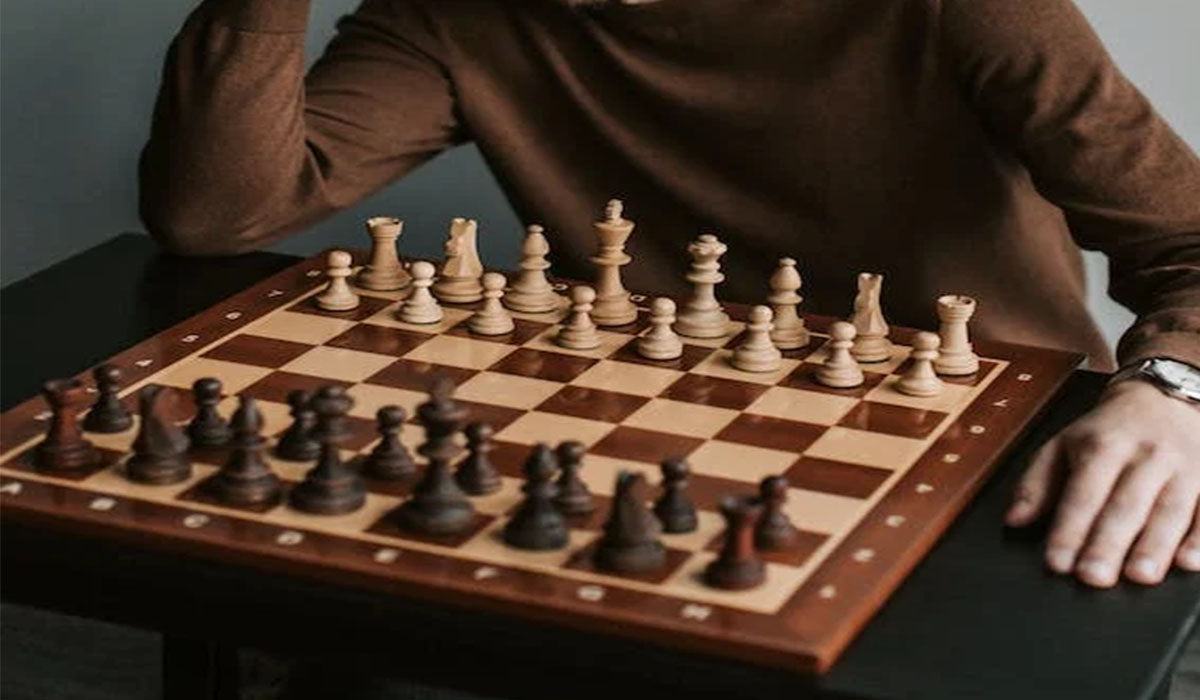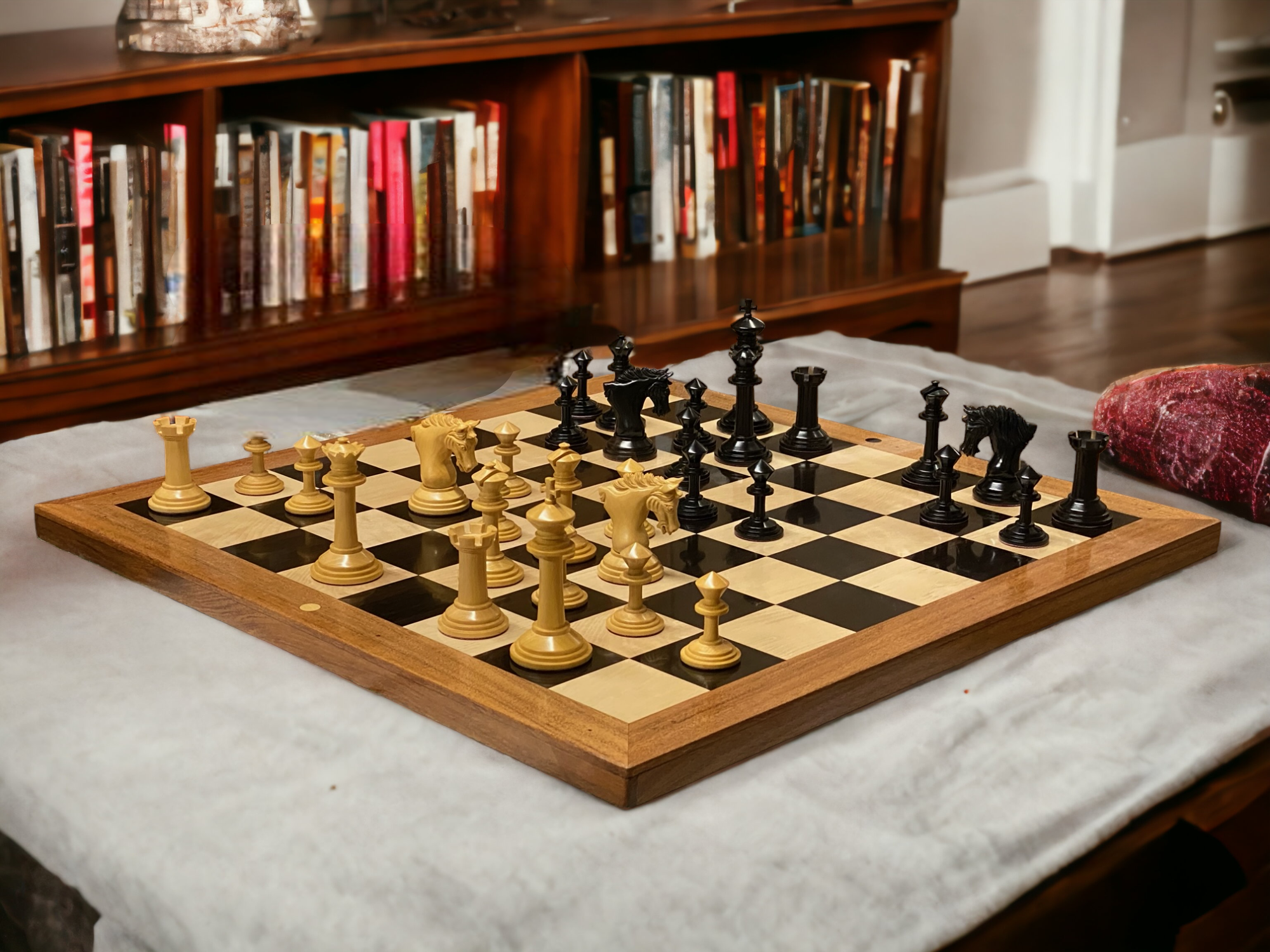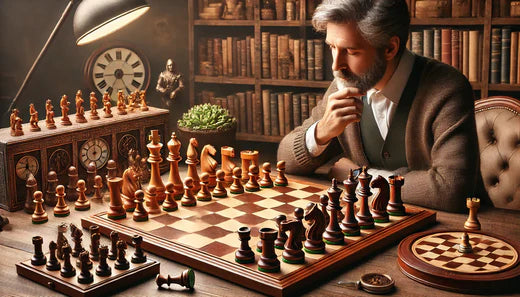The Chessboard Table in Furniture Design:
In the realm of furniture design, a singular masterpiece stands the test of time—the chessboard table. This unique piece seamlessly weaves together strategic gameplay and aesthetic appeal, making it a focal point in diverse settings, from the traditional to the contemporary.
With an open invitation to players and enthusiasts, the chessboard table beckons individuals to immerse themselves in the rich history of chess, all while adding a touch of sophistication to their surroundings. This article delves into the chessboard table's historical roots, explores its intricate design elements, and unravels the enduring allure that has solidified its place as an icon in the world of furniture design.
A Timeless Centerpiece of Intellectual Pursuit and Design Mastery
As a centerpiece that transcends eras and styles, the chessboard table captures the imagination, embodying the intellectual pursuit and strategic thinking inherent in the game it hosts. Its design, a mosaic of contrasting materials such as wood, marble, or metal, creates a visually striking checkerboard pattern. From traditional wooden craftsmanship to modern innovations incorporating acrylic and LED lighting, the chessboard table continues to evolve, adapting to contemporary tastes while preserving its timeless charm.
Beyond its role as a gaming platform, the chessboard table boasts functionality with built-in storage for chess pieces, seamlessly integrating into the ebb and flow of daily life. Whether positioned in a classic study adorned with leather-bound volumes or a minimalist living space, the chessboard table effortlessly enhances the ambiance, making a statement that goes beyond mere furniture.
-
Historical Roots:
The origins of the chessboard table can be traced back to centuries past, when chess itself emerged as a game of intellectual prowess and strategic thinking. Chess, believed to have originated in India around the 6th century, quickly spread across the globe, reaching Europe by the 9th century. As the game gained popularity among the elite, so too did the desire for a dedicated playing surface that reflected the grandeur and intellectual rigor associated with chess.
The first chessboard tables were often ornately crafted, with intricate inlays and carvings showcasing the craftsmanship of the artisans. These tables became a symbol of sophistication and refinement, gracing the halls of noble residences and the salons of intellectuals. Over time, the design evolved to accommodate the changing tastes of different eras, yet the fundamental essence of a square playing surface remained, providing the perfect canvas for the timeless battle of wits.
-
Design Elements:
A chessboard table is characterized by its distinctive checkerboard pattern, typically made from contrasting materials such as wood, marble, or metal. The most traditional design features a grid of 64 alternating dark and light squares, mirroring the chessboard itself. The size of the squares may vary, influencing the overall dimensions of the table.
Crafting Elegance
Wood remains a popular choice for crafting chessboard tables, with fine woods like mahogany, walnut, and oak being favored for their durability and rich aesthetic appeal. The craftsmanship involved in creating the intricate inlays demands a high level of skill, with each square meticulously placed to achieve a seamless and visually striking result.
Marble chessboard tables, on the other hand, exude opulence and luxury. The cold, smooth surface of marble provides a stark contrast to the warmth of wooden pieces, creating a visually arresting composition. The natural veining of marble adds a touch of uniqueness to each table, making it a one-of-a-kind piece of functional art.
Modern iterations of chessboard tables often incorporate innovative materials and design elements. Acrylic, glass, and metal are frequently utilized to create tables that not only serve as game boards but also double as contemporary art pieces. LED lighting features may be integrated, adding a futuristic flair to the classic design and enhancing the overall gaming experience.
-
Versatility in Style:
One of the enduring charms of the chessboard table lies in its versatility, seamlessly blending into a variety of interior styles. Whether placed in a classic library adorned with leather-bound books or a minimalist living room with sleek, modern furniture, the chessboard table adds a touch of intellectual allure.
In traditional settings, the table may be accompanied by ornate chairs, creating a designated space for intellectual pursuits. In more contemporary environments, the chessboard table becomes a focal point, commanding attention with its clean lines and bold design. Its ability to transcend time and style makes the chessboard table a coveted piece for interior designers seeking to marry classic and modern aesthetics.
-
Functionality Beyond Chess:
While the primary purpose of the chessboard table is to facilitate intense battles of strategy and intellect, its functionality extends beyond the chessboard itself. Many tables are designed with built-in storage for chess pieces, ensuring that the game remains intact and ready for play at any time. Some tables even feature drawers or compartments to house other board games, doubling as a hub for social gatherings and entertainment.
In addition to its functional aspects, the chessboard table serves as a symbolic centerpiece for fostering intellectual discourse. It becomes a gathering point for friends and family, encouraging face-to-face interaction and the cultivation of critical thinking skills. The timeless appeal of chess transcends generations, making the table a conduit for passing down traditions and fostering a love for strategic thinking.
Chessboard Table: Functionality Meets Aesthetics in Furniture Design
In the ever-evolving landscape of furniture design, the chessboard table stands as a testament to the enduring marriage of functionality and aesthetics. Its rich historical roots, intricate design elements, and versatility in style make it a cherished addition to both classic and contemporary interiors. Beyond its role as a platform for strategic gameplay, the chessboard table symbolizes a commitment to intellectual pursuits and serves as a focal point for meaningful social interactions. As we navigate the complexities of modern living, the chessboard table invites us to pause, reflect, and engage in a timeless game that transcends the boundaries of time and culture.



